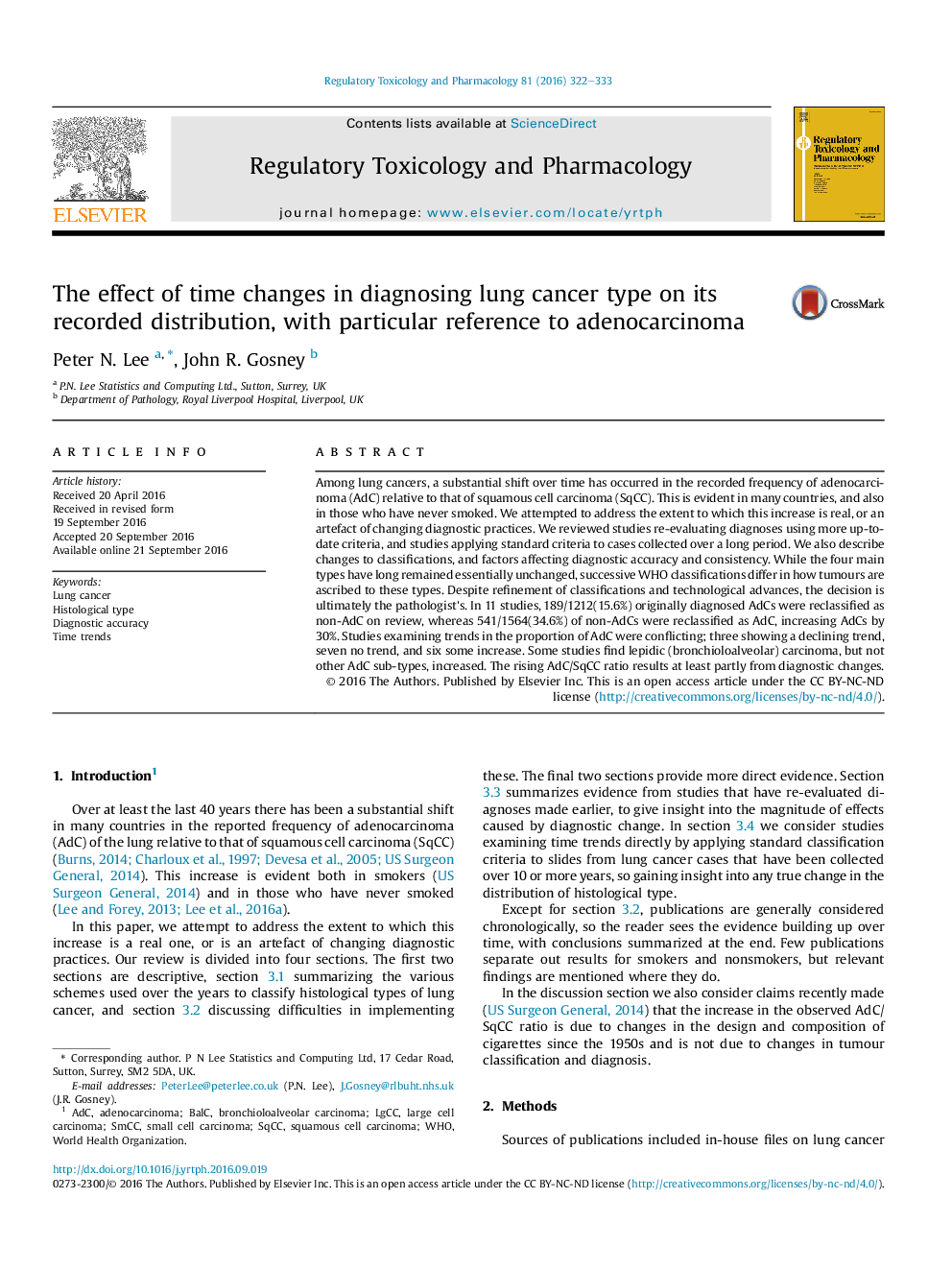| Article ID | Journal | Published Year | Pages | File Type |
|---|---|---|---|---|
| 5855764 | Regulatory Toxicology and Pharmacology | 2016 | 12 Pages |
â¢The rising percentage of lung adenocarcinoma is claimed due to cigarette changes.â¢We investigated whether changes in diagnosis contribute to this change.â¢11 studies reviewing earlier diagnoses increased adenocarcinomas by 30% overall.â¢Applying standard criteria to cases seen long-term showed no clear trend in adeno%.â¢The rise in the % of adenocarcinoma results at least partly from diagnostic changes.
Among lung cancers, a substantial shift over time has occurred in the recorded frequency of adenocarcinoma (AdC) relative to that of squamous cell carcinoma (SqCC). This is evident in many countries, and also in those who have never smoked. We attempted to address the extent to which this increase is real, or an artefact of changing diagnostic practices. We reviewed studies re-evaluating diagnoses using more up-to-date criteria, and studies applying standard criteria to cases collected over a long period. We also describe changes to classifications, and factors affecting diagnostic accuracy and consistency. While the four main types have long remained essentially unchanged, successive WHO classifications differ in how tumours are ascribed to these types. Despite refinement of classifications and technological advances, the decision is ultimately the pathologist's. In 11 studies, 189/1212(15.6%) originally diagnosed AdCs were reclassified as non-AdC on review, whereas 541/1564(34.6%) of non-AdCs were reclassified as AdC, increasing AdCs by 30%. Studies examining trends in the proportion of AdC were conflicting; three showing a declining trend, seven no trend, and six some increase. Some studies find lepidic (bronchioloalveolar) carcinoma, but not other AdC sub-types, increased. The rising AdC/SqCC ratio results at least partly from diagnostic changes.
